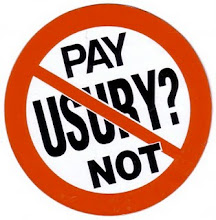Alternative Currencies Grow in Popularity

By Judith D. Schwartz
"Most of us take for granted that those rectangular green slips of paper we keep in our wallets are inviolable: the physical embodiment of value. But alternative forms of money have a long history and appear to be growing in popularity. It's not merely barter or primitive means of exchange like seashells or beads. Beneath the financial radar, in hip U.S. towns or South African townships, in shops, markets and even banks, people throughout the world are exchanging goods and services via thousands of currency types that look nothing like official tender.
Alternative means of trade often surface during tough economic times. "When money gets dried up and there are still needs to be met in society, people come up with creative ways to meet those needs," says Peter North, a senior lecturer in geography at the University of Liverpool and the author of two books on the subject. He refers to the "scrips" issued in the U.S. and Europe during the Great Depression that kept money flowing and the massive barter exchanges involving millions of people that emerged amid runaway inflation in Argentina in 2000. "People were kept from starving [this way]," he says. (Find out 10 things to do with your money.)
Closer to home, "Ithaca Hours," with a livable hourly wage as the standard, were launched during the 1991 recession to sustain the economy in Ithaca, N.Y., and stem the loss of jobs. Hours, which are legal and taxable, circulate within the community, moving from local shop to local artisan and back, rather than leaking out into the larger monetary system. The logo on the Hour reads "In Ithaca We Trust."
Alternative (or "complementary") currencies range from quaint to robust, simple to high tech. There are Greens from the Lettuce Patch Bank at the Dancing Rabbit Ecovillage in rural northeastern Missouri. In western Massachusetts one finds fine-artist-designed BerkShares, which are convertible to U.S. dollars. More than $2 million in BerkShares have been issued through the 12 branches of five local banks, according to Susan Witt, executive director of the E.F. Schumacher Society, the nonprofit behind the currency. And in South Africa, proprietary software keeps track of Community Exchange System (CES) Talents; one ambitious plan is to make Khayelitsha, a vast, desolate township of perhaps 1 million inhabitants near Cape Town, a self-sustaining community.
An alternative currency is generally used in conjunction with conventional money; one may use local currency at the farmers' market and regular greenbacks at the supermarket. "It doesn't try in any way to replace cash," says Christoph Hensch, a Swiss national and former banker living in Christchurch, New Zealand. Rather, it offers a way "for people to share and redeem value they have in the community." He says the currencies are most useful in geographical areas or social sectors where money doesn't flow sufficiently, citing, for example, New Zealand's Golden Bay, which is so remote that it sometimes nearly functions as its own economy.
Advocates of alternative currencies say they are a means of empowerment for those languishing on the margins of fiscal life, granting economic agency to people like the elderly, the disabled or the underemployed, who have little opportunity to earn money. For example, in some systems one can "bank" Time Dollars for tasks like child care and changing motor oil. It's not whether you're employed or what financial assets you have that matter, says Les Squires, a consultant on social-networking software who has been working with groups developing alternative currencies. Each person has "value" that is "exchangeable" on the basis of time spent or a given task." (snip) ...
NOTE: This article is originally published at this website:
http://www.time.com/time/business/article/0%2C8599%2C1865467%2C00.html?xid=feed-yahoo-biztech


0 Comments:
Post a Comment
<< Home